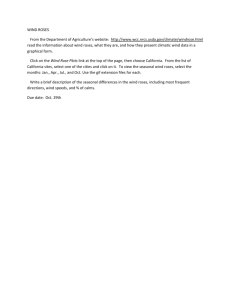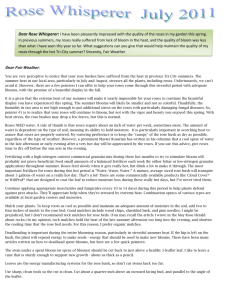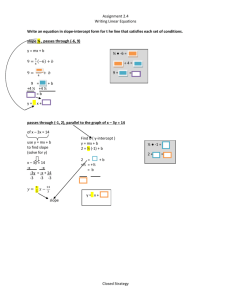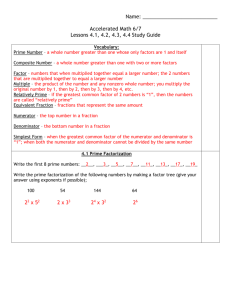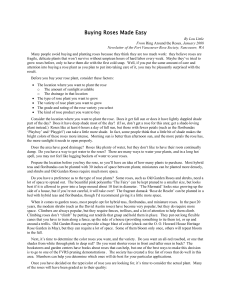Excerpts From The China Rose - Quarryhill Botanical Garden
advertisement
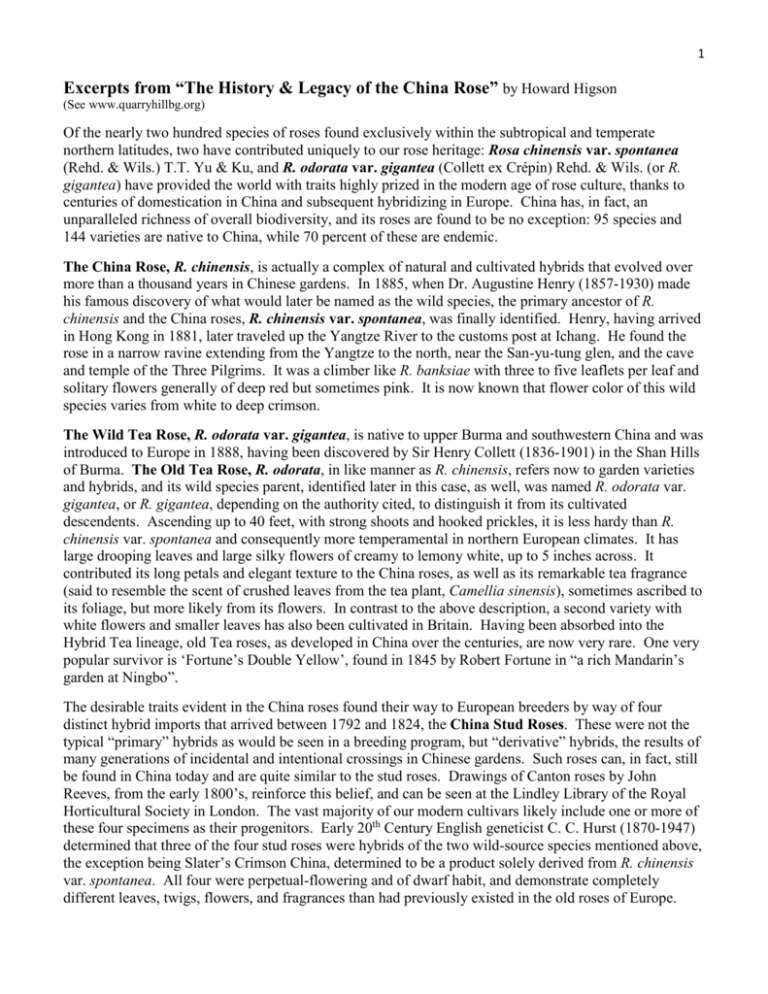
1 Excerpts from “The History & Legacy of the China Rose” by Howard Higson (See www.quarryhillbg.org) Of the nearly two hundred species of roses found exclusively within the subtropical and temperate northern latitudes, two have contributed uniquely to our rose heritage: Rosa chinensis var. spontanea (Rehd. & Wils.) T.T. Yu & Ku, and R. odorata var. gigantea (Collett ex Crépin) Rehd. & Wils. (or R. gigantea) have provided the world with traits highly prized in the modern age of rose culture, thanks to centuries of domestication in China and subsequent hybridizing in Europe. China has, in fact, an unparalleled richness of overall biodiversity, and its roses are found to be no exception: 95 species and 144 varieties are native to China, while 70 percent of these are endemic. The China Rose, R. chinensis, is actually a complex of natural and cultivated hybrids that evolved over more than a thousand years in Chinese gardens. In 1885, when Dr. Augustine Henry (1857-1930) made his famous discovery of what would later be named as the wild species, the primary ancestor of R. chinensis and the China roses, R. chinensis var. spontanea, was finally identified. Henry, having arrived in Hong Kong in 1881, later traveled up the Yangtze River to the customs post at Ichang. He found the rose in a narrow ravine extending from the Yangtze to the north, near the San-yu-tung glen, and the cave and temple of the Three Pilgrims. It was a climber like R. banksiae with three to five leaflets per leaf and solitary flowers generally of deep red but sometimes pink. It is now known that flower color of this wild species varies from white to deep crimson. The Wild Tea Rose, R. odorata var. gigantea, is native to upper Burma and southwestern China and was introduced to Europe in 1888, having been discovered by Sir Henry Collett (1836-1901) in the Shan Hills of Burma. The Old Tea Rose, R. odorata, in like manner as R. chinensis, refers now to garden varieties and hybrids, and its wild species parent, identified later in this case, as well, was named R. odorata var. gigantea, or R. gigantea, depending on the authority cited, to distinguish it from its cultivated descendents. Ascending up to 40 feet, with strong shoots and hooked prickles, it is less hardy than R. chinensis var. spontanea and consequently more temperamental in northern European climates. It has large drooping leaves and large silky flowers of creamy to lemony white, up to 5 inches across. It contributed its long petals and elegant texture to the China roses, as well as its remarkable tea fragrance (said to resemble the scent of crushed leaves from the tea plant, Camellia sinensis), sometimes ascribed to its foliage, but more likely from its flowers. In contrast to the above description, a second variety with white flowers and smaller leaves has also been cultivated in Britain. Having been absorbed into the Hybrid Tea lineage, old Tea roses, as developed in China over the centuries, are now very rare. One very popular survivor is ‘Fortune’s Double Yellow’, found in 1845 by Robert Fortune in “a rich Mandarin’s garden at Ningbo”. The desirable traits evident in the China roses found their way to European breeders by way of four distinct hybrid imports that arrived between 1792 and 1824, the China Stud Roses. These were not the typical “primary” hybrids as would be seen in a breeding program, but “derivative” hybrids, the results of many generations of incidental and intentional crossings in Chinese gardens. Such roses can, in fact, still be found in China today and are quite similar to the stud roses. Drawings of Canton roses by John Reeves, from the early 1800’s, reinforce this belief, and can be seen at the Lindley Library of the Royal Horticultural Society in London. The vast majority of our modern cultivars likely include one or more of these four specimens as their progenitors. Early 20th Century English geneticist C. C. Hurst (1870-1947) determined that three of the four stud roses were hybrids of the two wild-source species mentioned above, the exception being Slater’s Crimson China, determined to be a product solely derived from R. chinensis var. spontanea. All four were perpetual-flowering and of dwarf habit, and demonstrate completely different leaves, twigs, flowers, and fragrances than had previously existed in the old roses of Europe.
